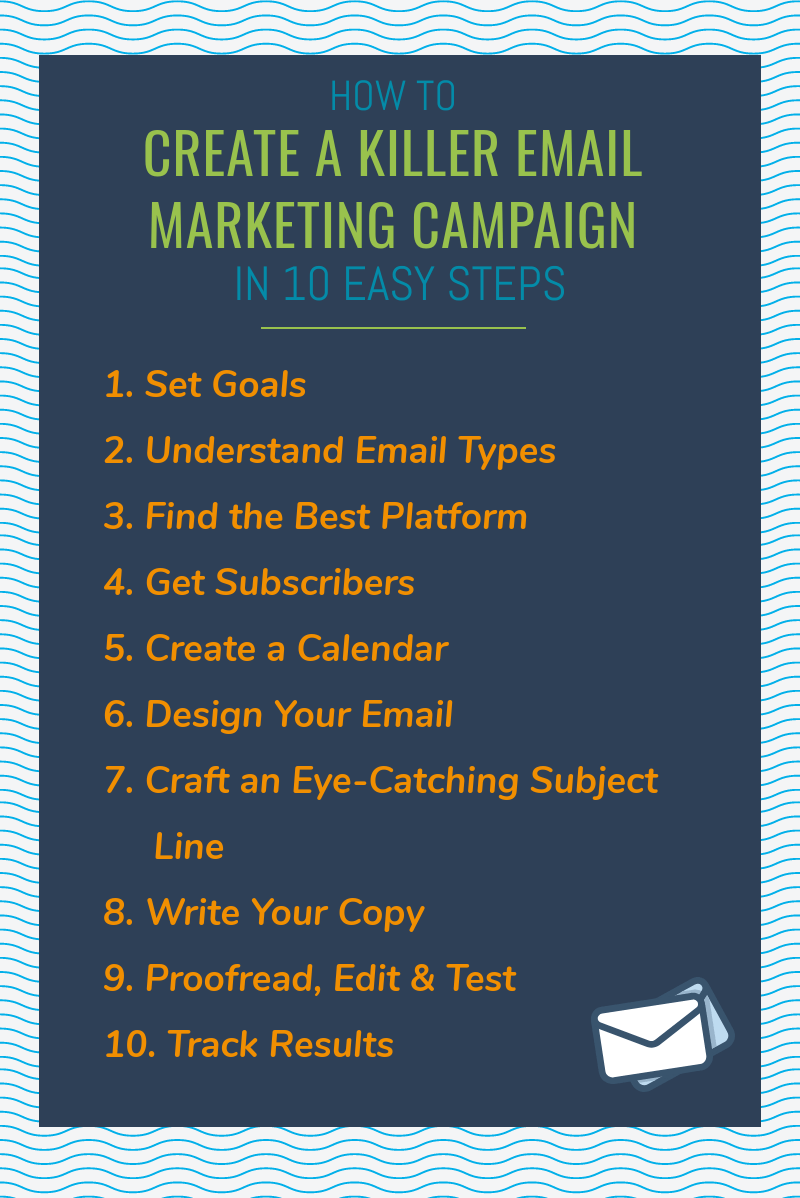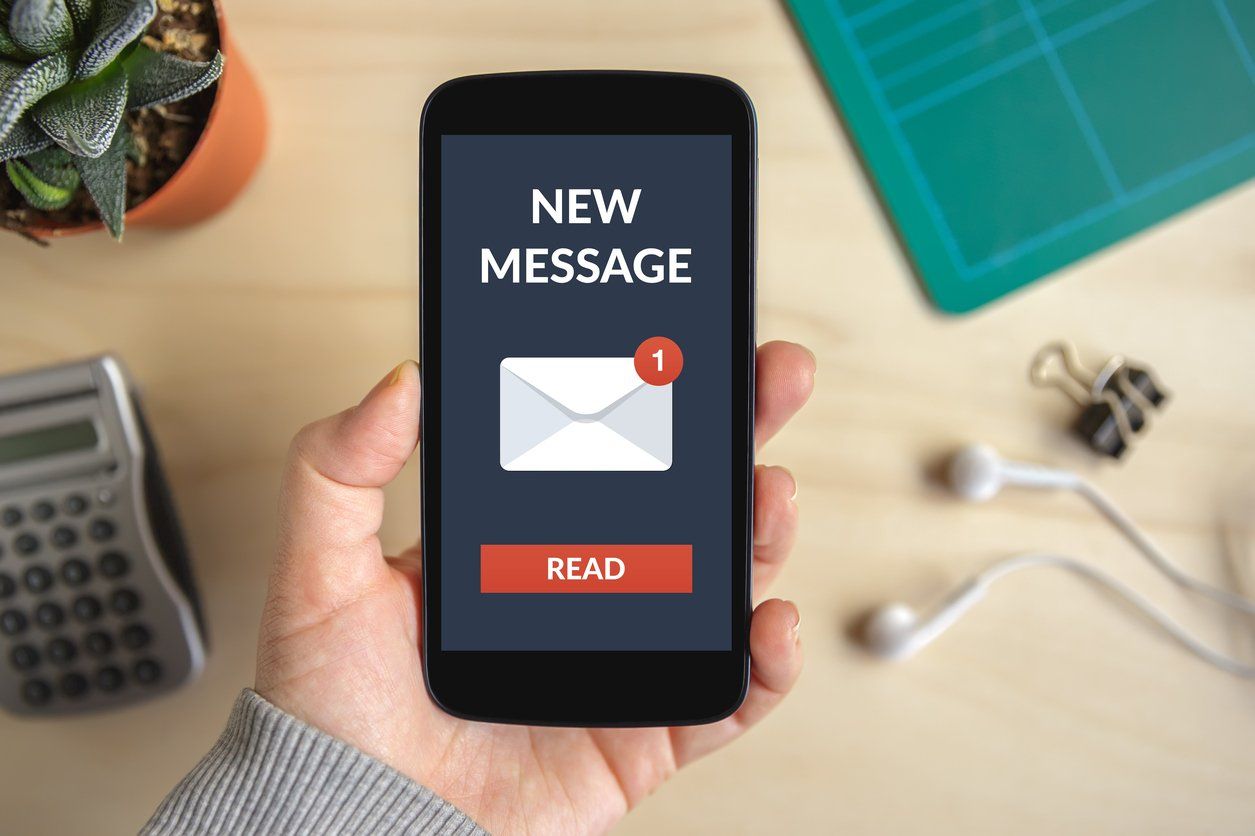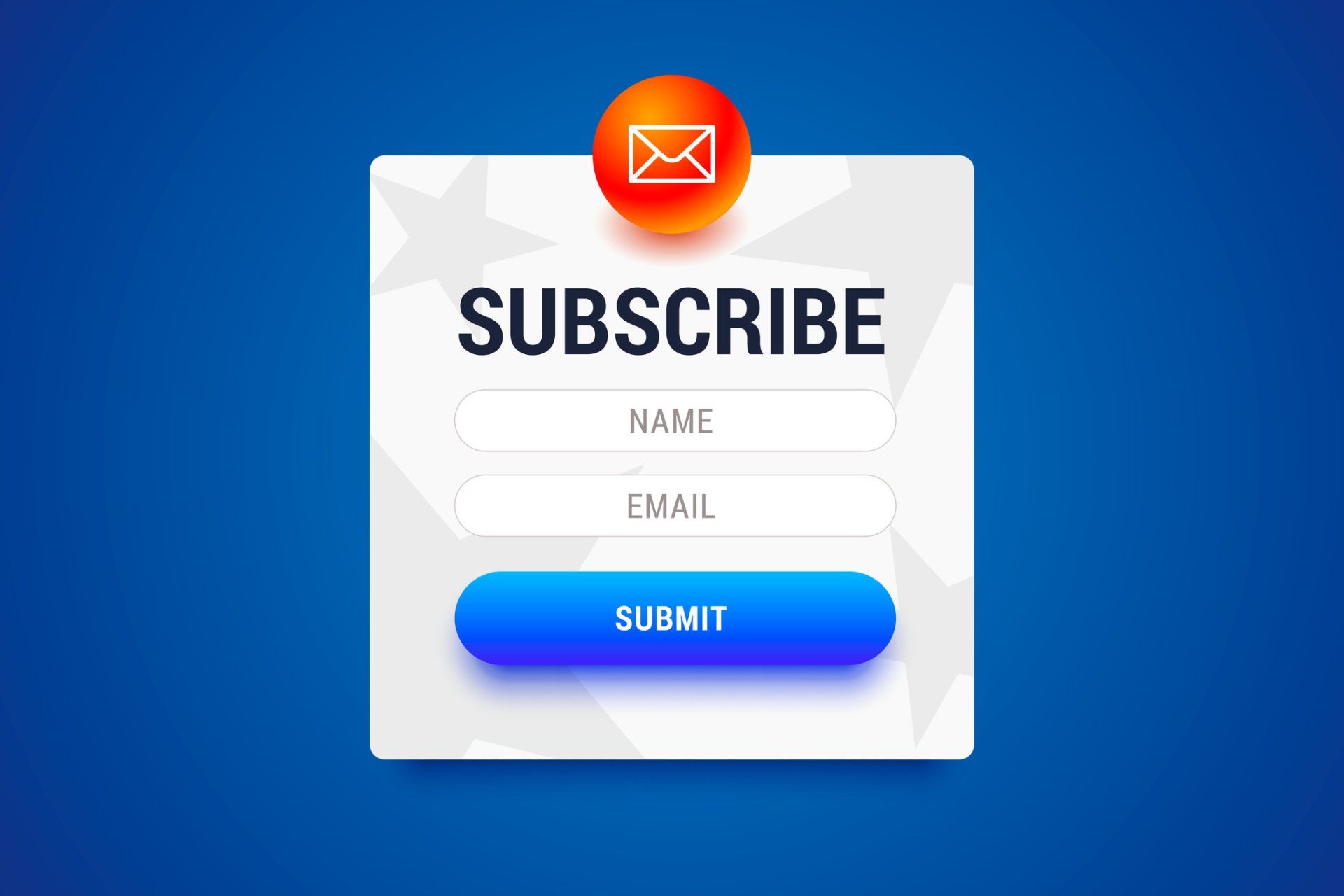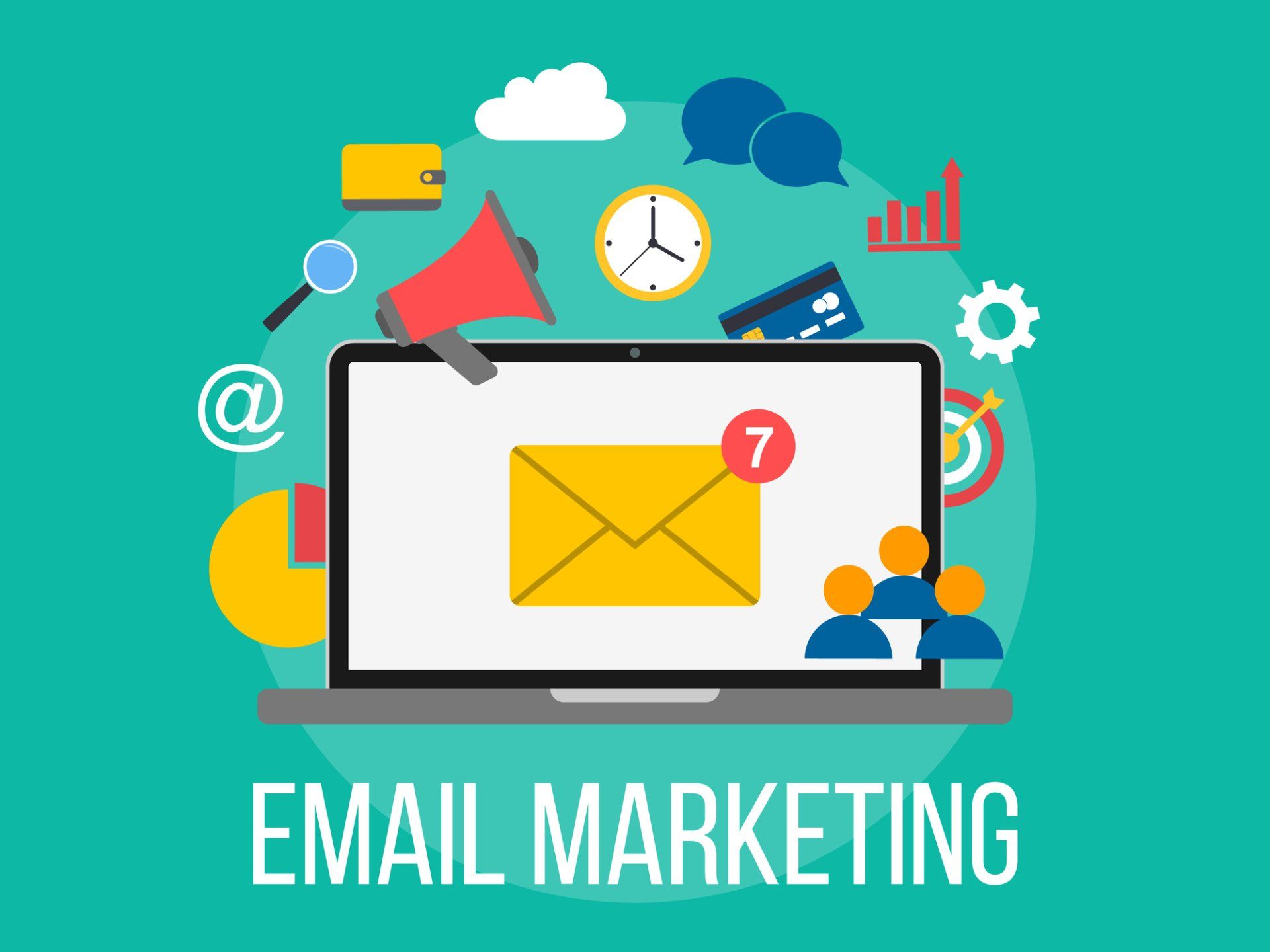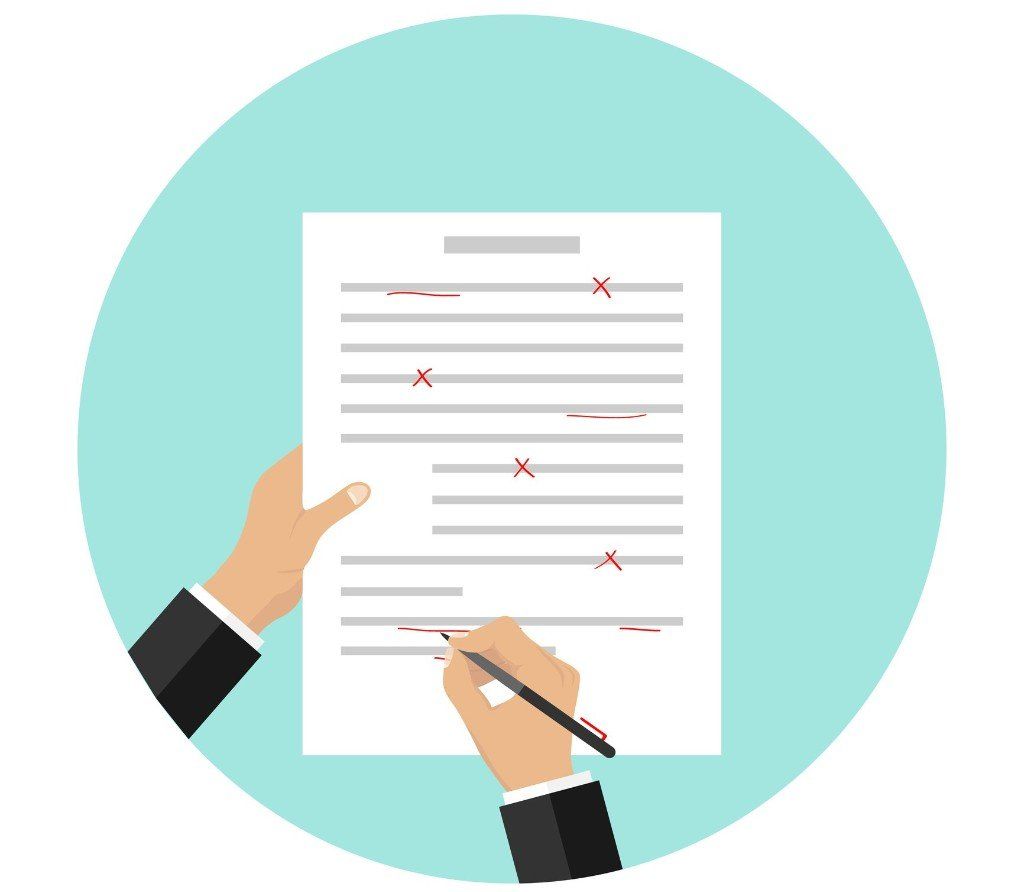How to Create a Killer Email Marketing Campaign in 10 Easy Steps
Everything you need for a successful email campaign
Think about the last time you checked your email inbox. There’s a good chance you had at least half a dozen emails from companies offering promotions or sending you product information.
Email marketing is becoming an increasingly popular way of delivering a message to your audience, especially if your goal is to get consumers to take some sort of action. But creating an email campaign that has the effect you want is harder than you might think.
Before you start your next round of email marketing, here’s what you need to do to create a successful campaign.
1. Set Goals
What is it you want to get out of your emails? Do you want to get more people coming to your website? Increase blog readers? Make a sale? These can all be objectives that you want to achieve from your email marketing campaign, but you need to focus on one overarching goal from the get-go.
Having a set goal in mind will help you make all other decisions about your email marketing campaign.
2. Understand Email Types
There are several different types of emailsthat can be sent out by businesses. Here are a few types of emails you might consider sending at various points:
- Promotional (discounts, sales, etc.)
- Newsletter (blogs & content)
- Milestone (customer birthdays or company anniversary)
- Transactional (receipts & confirmations)
- Drip (email series that continually pushes one topic)
Odds are, you’ll use at least two or three of these email types throughout your marketing efforts. But before you start creating an email, you need to determine which type it will be.
3. Find the Best Platform
There are quite literally hundreds of email marketing platforms available, depending on what you’re looking for. Are you looking to customize your design or do you just want to copy and paste text into a basic template? Either way, you can find the right platform out there with just a bit of digging.
At Locallogy, we use the program Dripfor our email marketing campaigns. No, they are not a partner or sponsor of ours, we just really like the program. It allows us to easily create customized templates for our newsletter emails , which we send out most frequently.
4. Get Subscribers
A top-notch email campaign won’t be successful if you don’t have a mailing list to send emails to. Start creating a list of subscribers by adding a sign-up section to your website. There are a variety of strategies you can try to get users to sign up:
- Pop-up boxes to collect emails
- Offering discount or e-book for entering email
- Integrated calls to action
Creating a new sign-up list will also help you determine who your target audience is, based on what method they used to sign up. If they entered their email to get a discount, they likely will be customers. If they signed up to get an e-book, they might be industry peers.
5. Create a Calendar
Before you send any emails, create a calendar of how often you will realistically be able to send emails. For some companies, that might mean once a week. For others, it might be once a month. If you have a set goal in mind from the beginning of your campaign, you’ll be more likely to stick to that goal.
In addition to determining how often you’ll send out emails, decide what type of content will be in those emails. You might not know the exact blog topics you’ll send out each month for the next year, but you will know that you’ll be sending links to your most recent popular content.
6. Design Your Email
Whether you want to keep it simple or have an intricate design, you should plan your design ahead of time. If you have good design skills or are using a program that offers templates, you can choose or create the layout yourself. Otherwise, you might want to consider hiring a design service to build the email design you’re envisioning.
7. Craft an Eye-Catching Subject Line
Before your audience even opens your email, the first thing they’ll see is the subject line. That’s why you want to make sure your subject line catches their attention right away. Many people scan subject lines and determine if the email is something they want to open immediately or if it’s getting moved to the spam folder.
Your subject line should summarize what your email is about, while remaining short, sweet and to-the-point. Also, consider adding an emoji to your subject line to make it more visual and stand out among the sea of text in your readers’ inboxes.
8. Write Your Copy
Take a moment to sit down and write out the copy you want in your email. Have a colleague look it over for any mistakes or inconsistencies before putting it into your email template. You’ll likely have a set tone for your copy, so make sure to always keep the same voice throughout your campaigns. For us, we always start our monthly newsletters with a seasonal marketing-related pun.
9. Proofread, Edit & Test
Nothing makes you look more unprofessional than obvious mistakes that negate your entire message. Grammatical errors, broken links and images that won’t load are all surefire ways to drive your audience away. And once they see you as unprofessional, it’s hard to win them back.
That’s why it’s so important to proofread all content
and send test emails to yourself and teammates. Click on every link possible and make sure everything looks and works the way you want it to. Once you send your email out, there’s no turning back!
10. Track Results
The only way to really tell if your campaign is succeeding or falling flat is to look at the results. Tracking things like email opens, clicks and unsubscribes will help you understand where your strengths and weaknesses are. For example:
- Low email open rate means you might not have a catchy subject line
- Decreased clicks on certain links could mean you need to adjust your copy or calls to action
- High unsubscribe rates might mean you aren’t reaching your target audience
Once you see your results, you can make adjustments on your future email campaigns.
Message Received
Figuring out the perfect formula for an email campaign with your customers isn’t always easy. But by following these 10 steps, you’ll be much closer to having a killer campaign that delivers your message.
Get the Latest Content in Your Inbox
Want to be the first to know about new content? Sign up to get our weekly blog posts sent to your email!


